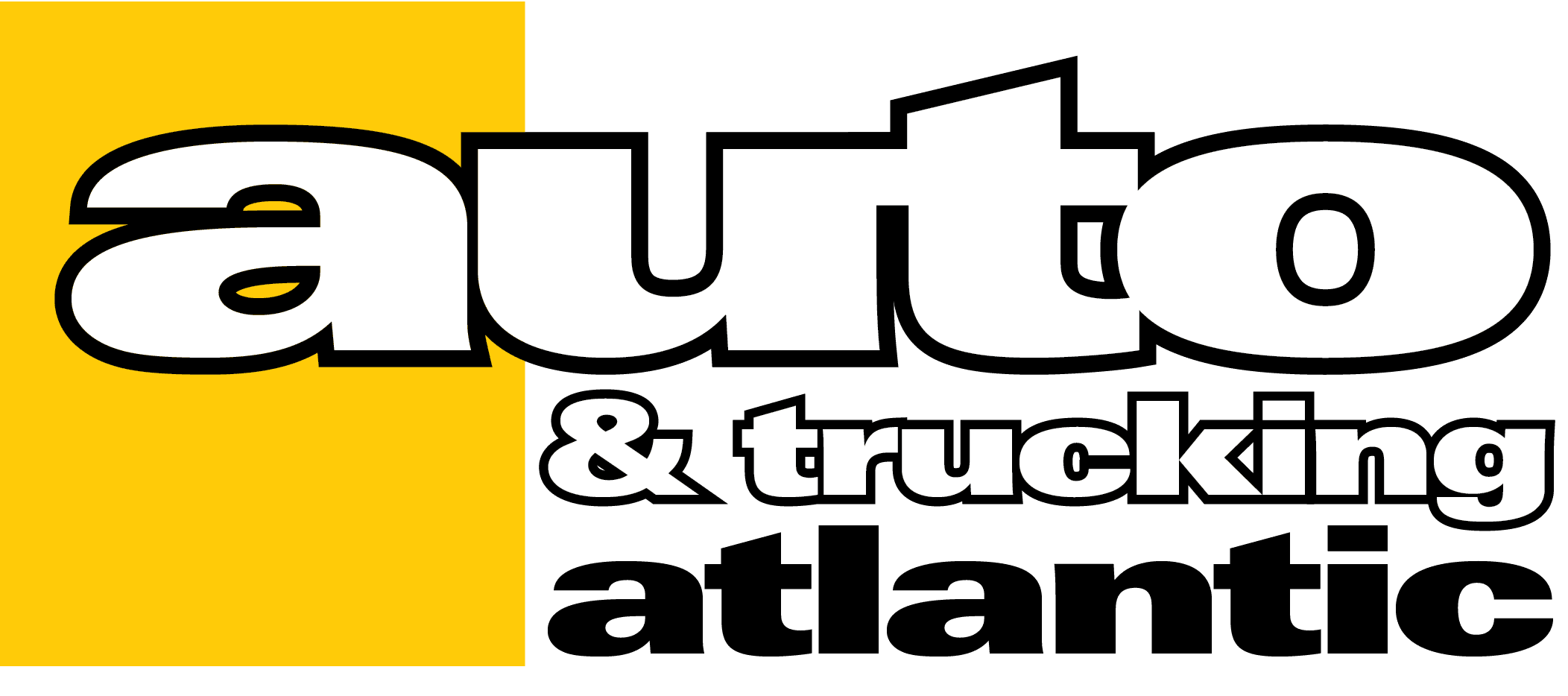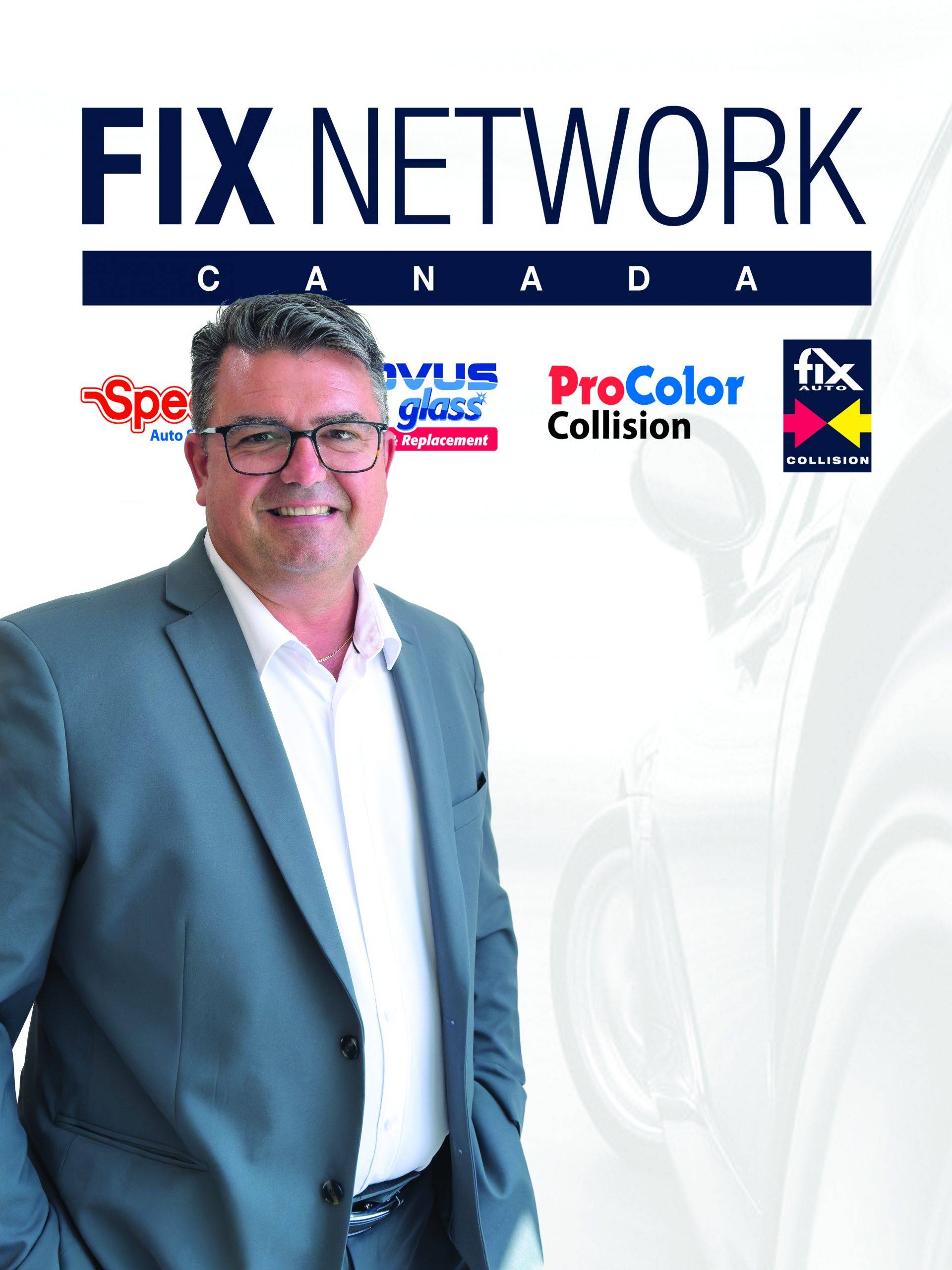Fix Canada President Sylvain Seguin bringing together Canadian collision repair leaders to ensure a fair and sustainable future for every business across country
By Kristen Lipscombe
For Fix Network Canada President Sylvain Seguin, “It’s always good to be able to give back to an industry that’s been very good to me.”
That’s why Seguin, who started off in the automotive industry 35 years ago as a technician before joining Fix Network in 2018, has always been passionate about working with vehicles to ensure the safety and security of driver. He is is excited to take on his new – and expanded – role as Chair of the 2025 Canadian Collision Industry Forum (CCIF), which is “powered by” the Automotive Industries Association of Canada (AIA).
“This prestigious role underscores Séguin’s dedication to advancing the Canadian collision repair industry through collaboration, innovation, and collective advancement,” the official news release reads.
Seguin took on this important national position as of this past February, with his first event at the helm of CCIF held March 19 and 20 in Toronto, Ont. The event is described as “the largest gathering of collision industry stakeholders in Canada,” according to the organization’s website, and falls under the larger Canadian Auto Care Industry Conference (CAIC) umbrella.
“Everyone who is anyone in the collision sector — collision repairers, insurers, original equipment manufacturers (OEMs), suppliers and service providers — (were) brought together under one roof in Toronto to connect, learn vital industry insights, and view the latest innovations at the CCIF vendor showcase,” the CCIF website says.
“Key industry stakeholders from both mechanical and collision sectors gathered to connect and discuss the industry’s trends and challenges.”
Seguin explains that as President of Fix Network Canada, which is not just a member of but also sponsors the CCIF, he knew that after about three years of serving on the group’s steering committee, that he’d be next in line to take on the chair position for a total of two years. And when he’s completed his term as chair, he’ll then take on the role of past chair for another two years to ensure a smooth transition for the entire steering committee.
“The steering committee is basically built with representatives from insurance, from OES (original equipment suppliers), from manufacturers, from shops,” Seguin explained recently to Auto and Trucking Atlantic, from Fix Canada’s office in Burlington. “So my job, literally, is to gather the best possible people (from across the country) to be part of the steering committee.”
And he’s ready for all the extra responsibility the role will require, including building and ensuring the sustainability of the CCIF’s steering committee, above and beyond his current commitments to ensuring Canada maintains the high-quality goals of the global Fix Network, which states its “redefining the standards of the collision repair industry.”
“At Fix Network, customer satisfaction is our main priority,” the company says. “We partner with major insurance providers to offer hassle-free claims management. Each auto body shop provides consistent, professional auto repair services, including standardized estimates, state-of-the-art equipment and friendly staff. With Fix Auto’s and ProColor’s trained and certified collision repair and service specialists, you’re in capable hands.”
The recent CCIF event in March marks the first time that AIA Canada and CCIF united for such a large event under one roof, Seguin told Auto and Trucking Atlantic, with close to 800 people from across the mechanical and collision industry sectors attending the precedent-setting Toronto gathering, which included a vendor showcase, networking reception and several educational presentations covering key topics to ensure a successful future for all stakeholders.
Highlights included a talk from Jim Bethune of Bethune Consulting Services, who chatted about how businesses can truly streamline processes, reduce costs and increase profitability; a panel discussion led by Saskatchewan Association of Automative Repairers (SAAR) executive director Tim Bissonnette and Saskatchewan Government Insurance (SGI) vice-president of claims Ryan Smith, who discussed collaboration within the collision repair industry; and break-out sessions such as The impact of vehicle technology advancements in collision repair, The human element: Harnessing the power of human nature to drive better team productivity and Building the Future: The Next Generation of Collision Repair Technicians.
Other topics of discussion included post-collision inspections and maintaining repair quality, led by I-CAR Canada and AIA Canada executive director Stuart Klein, and the inevitable role that artificial intelligence (AI) will play in the repair process and how businesses can leverage AI to improve profits and customer experience, led by BodyShop Booster CEO Ryan Taylor.
“There was a focus on how do we recruit and how do we bring back talent in this industry,” Seguin added to the highlights shared on the CCIF website.
“There was a really good panel that was discussing foreign technicians and the challenges, the new rules applied to them, which makes it a little more complex,” Seguin said. “I think, overall, there was a lot of good insight that that could be basically linked one to the other, so it was it was interesting.”
Seguin said another important topic of conversation on the collision side was ensuring sustainability within the industry.
“We’re giving an essential service,” he said. “So we need to make sure that we’re there to fix the cars of tomorrow in a safe manner and in order to do that, we need to be able to reinvest in equipment and training… and the latest technology.’
It’s all about maintaining the highest industry standards across the country, Seguin said, which means putting everyone on a level playing field in terms of certifications required and policies followed at all shops, whether big or small, across the country,
“The industry needs to mobilize to create that standard, which will help,” he said. “It’s highly important that technicians are trained and equipped to fix cars, but these services have to be available at a decent price too, right?”
“Again, we’re talking about sustainability and profitability,” Seguin said.
And of course, there was plenty of tariff talk over the course of the weekend as well, Seguin said, adding “not everybody is 100 per cent sure what the impact will be, but there was a lot of conversation about what can we do as an industry to mitigate costs.”
“As an industry, we need to be able to make sure that we’re going to focus on, ‘where we do have control?’ “ he explained. “Because we all know that parts will be impacted.”
“But the industry is well educated,” Seguin added. “They understand the issue, and I think everybody’s willing to do their best and basically focus on what they have control on…”
“Are we going to be able to source things within Canada? Are we looking at other countries?” “There’s going to be, in my opinion, a lot of impact in in the entire supply chain, but everybody will be doing their best.”
Overall, the CCIF event received “a lot of positive feedback,” Seguin said. “It’s always very well attended.”
The next CCIF is scheduled for Sept. 17 and Sept. 18 in Calgary, Alta. And will cover another array of “hot industry topics,” according to its promotional material. “Register now to attend to stay ahead of the curve and continue learning about the future of the industry.”
In total, there are three CCIF events like this held annually, Seguin explained, and it continues to grow rapidly as “the AIA wants to build and make it the aftermarket reunion of the year in Canada.”
In speaking in depth with Seguin, , it’s clear that he’s committed to making the most of his time as CCIF chair by focusing on creating and improving industry standards at all levels.
“I want to give my time, and I want to do the best I can,” which includes building a non-biased steering committee that will focus on a sustainable future for businesses from coast-to-coast-to-coast.
“I’m not there to promote my brand,” he explained, and nor should any other CCIF representative. “I’m there for the industry.”
“So, I think if we just do that; if we just push and make sure that we advance without having a (personal) agenda, I think it will help drastically,” he said, adding he didn’t wear Fix Network Canada swag at the conference because the independence and objectivity of the committee is what matters most.
“The objective to take out the competition and talk about what’s best for the industry as a whole, and coming together as a team rather than trying to sell to each other or compete with each other.”
Circling back to why he does what he does, Seguin said he always loved being a technician, a joy that was kick-started by working on cars with his father and brother during the summer months. His father, who has since passed on, ran a shop in Montreal for many years, so his career path certainly came naturally. Seguin hopes more young people will consider the automotive industry as a potential career choice.
“The more people who get involved and speak about this industry, the more we’re going to be able to attract young talent,” Seguin said, adding that enthusiasm he felt as a youngster and attracting more skilled workers are pivotal to ensuring the healthy growth of the industry.
“This opportunity is not just a position for me; it represents a critical moment for collaboration and progress within the Canadian collision repair sector,” Seguin said in the official CCIF news release announcing his new role.
“As Chair, my foremost responsibility will be to from a Steering Committee composed of individuals with diverse backgrounds and expertise. Together, we will build a strategic agenda to identify emerging trends and seize future opportunities.”
Learn more about the Canadian Collision Industry Forum.

